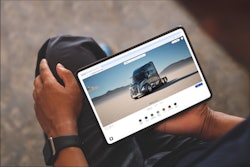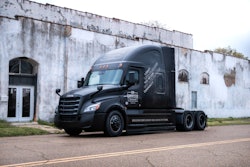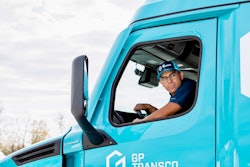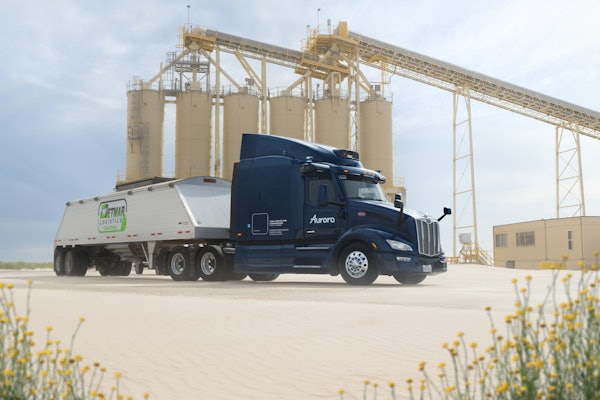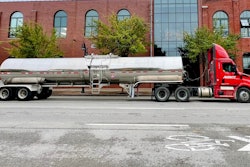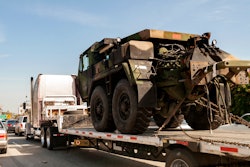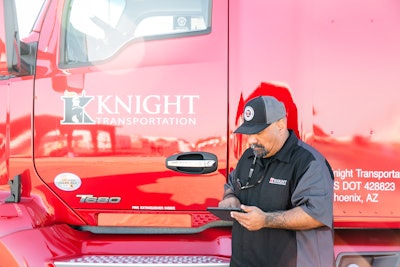
CCJ Innovators profiles carriers and fleets that have found innovative ways to overcome trucking’s challenges. If you know a carrier that has displayed innovation, contact CCJ Chief Editor Jason Cannon at [email protected] or 800-633-5953.
A truck driver is most likely to make the decision to stay with or a leave a fleet within their first 30 days, and the orientation process – itself not a lot of fun or particularly interesting – can be a make or break opportunity for recruiters.
"One of the things that we found has the biggest impact on somebody's retention is the experience that they have when they come on to your company," said Kenneth Schnee, head of transportation sales for First Advantage. "The first experience that they have with the technology of your company is their onboarding experience, and if it is cumbersome, lackadaisical, requires a ton of input, or a ton of manual effort, that's how they're going to view your company coming into the organization."
Classroom-style orientation is often low-engagement, and retention can also be low given that a couple days of presentations generally doesn't include hands-on training.
Jared Bohne, IT Product Manager for Driver App and Truck Telematics at Knight-Swift (CCJ Top 250, No. 4), sought to de-emphasize a typical lecture-type environment for driver onboarding and go all-in on the very thing the company's drivers use everyday: the app.
"We would try and link PowerPoints together in a fancy way and try and make (onboarding) seem interactive," he said, "but it just never quite accomplished that, and every time you change anything in the (driver) app, (the PowerPoint) is now out-dated."
The proliferation of technology has made many parts of trucking easier, but it's made onboarding more complex. When the technology changes, the orientation material has to keep up or risk being irrelevant. Migrating the training into the app allows Bohne's team to make updates as needed while simultaneously updating the training material since it's all connected to the app.
Just how important is the app?
Inside Knight-Swift's app, the driver will find their order assignment; destination; navigation to their locations; all the stops on the order; all the locations and all the stop information; and bill of lading numbers. The app is also how the driver scans in paperwork and communicates back to the office that they have arrived and departed stops on their route, among other things.
"It's really their companion piece for their life out on the road," Bohne said.
That so much of the life of a load filters through the app, a single mistake can have a cascading effect.
The Phoenix, Arizona-based carrier developed a virtual training environment that, along with an in-person facilitator, walks drivers through how to use the app while they're actually using the app before ever being dispatched on a live load.
"The goal was, basically, drivers could go in experience it," he said, "just as they would if they were in a truck out on the road in their normal day-to-day job."
Bohne noted initial development was problematic and the idea sat on the shelf "for years," but about six months ago the idea finally was dusted off. A month later the new training tool was born.
"Essentially, it's kind of like a makeshift database of a particular order that a driver would haul," said Bohne.
Knight-Swift has tablets at all its locations and the virtual training environment allows the driver to log in and learn how to use the tools and processes they will actually use in the field.
"Because it's in our app environment, we can connect it to our ELD provider," Bohne said. "So we can get in there and do ELD training. That's actually in the Geotab app itself, so they can get in there and use the ELD just as they would in the truck."
Drivers can perform the entire life of the load, including updating duty status and asset inspections. "Just the whole thing right before they even step foot in a truck or with a mentor or anything like that," Bohne said.
"So it's an actual hands on experience rather than just, 'Here's a bunch of slideshows,' or "Here's a bunch of courses on the internet,'" he added. "Those have their place and can be effective depending on what you're trying to teach or what your goals are, but with an app that has a lot of functions, and they're in it every single day, (drivers) need to be using it and training it with... I think now more than ever we see that we need to be able to engage physically with staff to really grasp a lot of the concepts."
Allows mentors to be mentors
Bohne said most drivers are functionally proficient with the app after just a few hours, and noted the shift in training has allowed driver mentors to focus their attention on actually mentoring new driver versus app-based troubleshooting. It's also cut down on the number of inbound calls from drivers to the support team with questions about their loads.
"One of the things that we had heard [previously] from our mentors was that these students come out and they just don't know anything about the app," he said, "and now that they've actually had some experience with it, that's not happening anymore. Now they're getting students who do know how to use the basics of the app, so they're not having to start from square one."
Re-tooling the training has also paid dividends for drivers who aren't assigned a mentor. Veteran truck drivers new to the company are generally placed on the road following orientation. As they fumbled with technology, Bohne said they had to call the office to have mistakes corrected. However, when app-based training was first made live in Phoenix earlier this year, successful integrations with calls – where a driver successfully reports via the app their load status – improved quickly.
"We've seen those go up because that's what we train on," he said. "In like six to seven weeks, our successful call integrations went up by 12%, which was really, really good."
The CCJ Innovators program is sponsored by Comdata, ExxonMobil, Fleetworthy and Mack Trucks.


